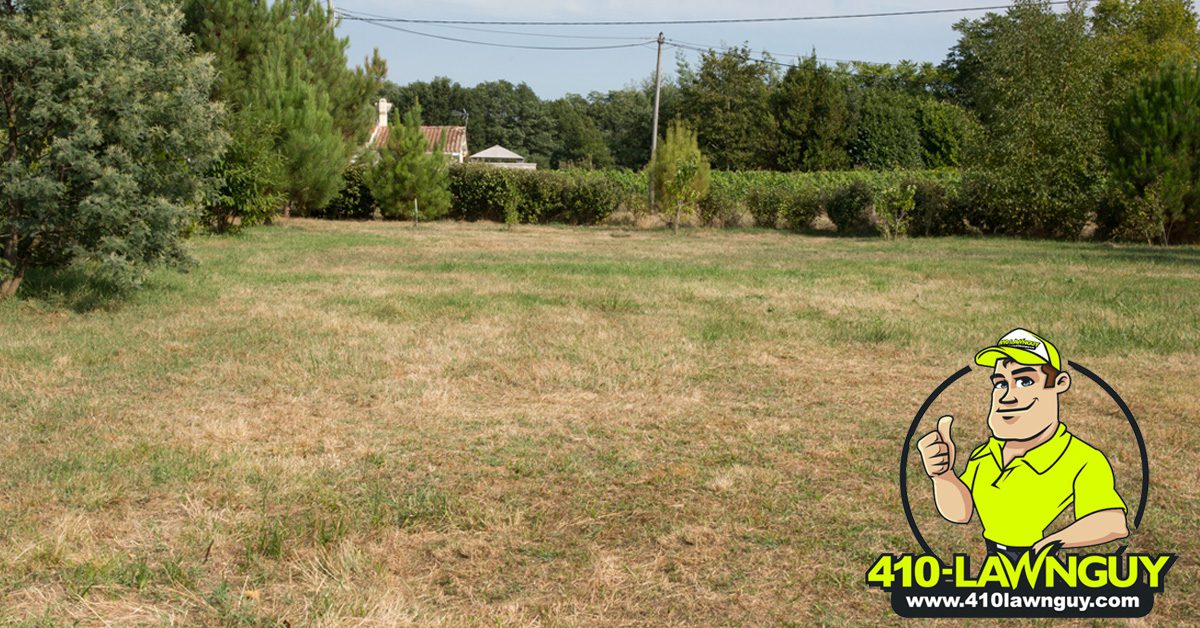 You can expect burned lawns in our climate, but that doesn’t mean there’s nothing you can do about it. As we get closer to the hottest days of summer here in Maryland, you may have noticed your lawn getting drier and more brown. Here are some tips on how to prevent burned lawns and ways to heal and treat yours if it’s already burned.
You can expect burned lawns in our climate, but that doesn’t mean there’s nothing you can do about it. As we get closer to the hottest days of summer here in Maryland, you may have noticed your lawn getting drier and more brown. Here are some tips on how to prevent burned lawns and ways to heal and treat yours if it’s already burned.
How To Prevent Burned Lawns
Burned lawns often happen because of a too heavy or light application of fertilizers and pesticides, improper watering, poor drainage, or scorching summer sun.
Here are some tips for preventing burned lawns:
One way to prevent a burned lawn is to ensure it gets at least an inch of water each week
If you apply fertilizers or pesticides, follow the package instructions to avoid being too heavy or light on the application
Minimize foot traffic across the lawn on hot and dry days
Use the highest position on your lawn mower to allow grass to grow deep roots
Avoid using weed-and-feed products in temperatures above 85 degrees
How To Treat Burned Lawns
Even with the best effort, you can still have a burned lawn, especially when dealing with endless scorching summer days. Once the damage starts, it can be hard to stop, but with these tips, you can begin to heal and treat your heat-burnt grass.
Mowing
If you can, the best thing to do is avoid mowing your scorched grass. Mowing it can add to the damage that the grass has already endured. You should also prevent foot traffic as much as possible on the scorched areas to allow the grass time to heal and regenerate.
If you must mow, check your lawn mower blades to ensure they’re sharp. Dull mower blades will destroy the grass, adding to the damage and prolonging the healing process.
You should also avoid mowing during the hottest parts of the day. Instead, mow during the coolest parts of the day, which gives the grass time to seal the opening to prevent further sun damage.
Watering
Inconsistent watering is a common cause of heat-burnt grass. During dry spells, you want to water thoroughly to allow the water to get to the grassroots, but not so much that you overwater the grass.
Watering once or twice a week when rain isn’t forecasted can help your grass survive hot spells. You can use a rain gauge or water meter to more accurately control the amount of water the grass gets each week.
Like mowing, the best time of day to water is early morning or in the evening, after the sun has set. This allows the water to penetrate deep into the roots and not evaporate into the air or scorch the grass blades.
Reseeding
If your lawn looks burnt in patches, reseeding may help heal and treat your burned summer grass. You’ll have to remove the burnt grass and then put the new grass seed in its place. Water according to the seed instructions, doing so during the coolest times of day to give the seed the best chances of germinating and growing into a new, green lawn.
Letting The Pros Save Your Burned Lawns
If you don’t want to work on improving your burned lawn, call 410LawnGuy in Gambrills, Maryland, at 410-529-6489. Our team will come out to check your lawn and provide a free, no-obligation estimate.

